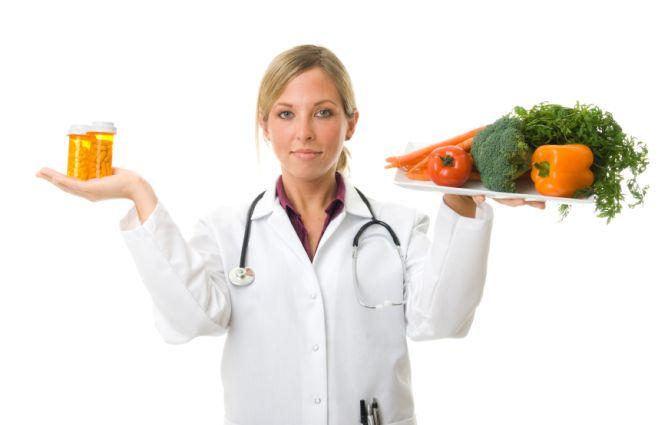Diet after acute pancreatitis guidelines:
The main task of the pancreas is the production and secretion of the digestive enzymes and the production of hormones (most notably insulin) as well as compounds that affect the function of blood vessels. The most common pancreatic diseases are the acute and chronic inflammation. Any disturbances in the pancreas can lead to digestive disorders, as well as other diseases such as diabetes and cardiovascular diseases. Acute pancreatitis is in most cases caused by biliary tract disease, especially cholelithiasis, and chronic alcohol consumption.
|
|
|
The disease affects people of all ages, although most cases are recorded after 50 years of age. The coexistence of obesity and hyperlipidemia also increases risk. Acute pancreatitis is activating produced digestive enzymes, which could not enter the duodenum through the pancreatic duct, they begin to act now within the organ. This causes the self-digestion of pancreatic, cells of this organ (as opposed to the intestinal epithelial cells) are not immune to its own enzymes action. The disease manifests itself first of all a sudden abdominal pain, gradually increasing, and the vomiting and nausea. Acute pancreatitis require hospital treatment, even when the process of the disease isn?t rapid. During the acute phase of illness starvation should be used, and after that often parenteral nutrition. In the period of convalescence after acute pancreatitis, we can identify three distinct periods in the type of dietary regimen.
The main principles of the diet
First period of convalescence
? The diet is then the most restrictive (it takes about a month).
? During the day should 5 meals be consumed, but with a small volume.
? The most important is the observance of the fats, proteins and carbohydrates. Daily diets should provide about 2000 kcal. The main source of energy must be here carbohydrates in an amount of about 345 g, fat should be reduced (as compared to a healthy human diet) - up to 40 g (in a healthy human diet about 70 g) and less protein - up to 65 g ( in healthy human diet about 80 g).
? All food must be easy to digest, not chargeable to the gastrointestinal tract. Cooking in water and steaming, rubbing or grinding of cooked vegetables and fruits, baking in foil without added fat, frying, steaming (e.g. eggs) is recommended.
? Do not fry and cook food with added fat. It should be added after cooking or at the end of cooking.
? When preparing soups, sauces and roux strong meat broths should be avoided.
? Seasoning is also important. It is recommended to use only mild spices such as cinnamon, vanilla, marjoram, thyme, basil, parsley and dill.
? Limiting the amount of salt is recommended for food preparation.
? The diet should also contain less fiber. Therefore it is recommended, whenever possible, to choose young vegetables, skipping high fiber contain vegetables (like cabbage, celery), remove seeds, peel vegetables and fruits. Coarse cereal and pasta must be replaced by a fine semolina and tiny pasta. You should also exclude all bloating products, such as cruciferous vegetables and legumes.
? To maintain an appropriate amount of fat in the diet should choose a low fat products such as low fat milk , lean meats such as poultry, and meat - veal, chicken, rabbits, turkeys.
? Products of animal origin must be in the three main meals and should be given in such quantities as to not exceed the recommended amount of protein and fat in the diet.
? Fruit and vegetable juices, weak tea are the recommended drinks. Strong tea and coffee may exacerbate symptoms, unfortunately, so please give it up. Throughout the recovery period alcoholic drinks are absolutely prohibited.
Second period of convalescence
? Increases the amount of energy up to 2200 calories as well as fat and protein in the diet. During the day it is recommended to eat 70 grams of protein and 50 grams of fat.
? Continue to follow the recommendations for the preparation of meals, so that they are easy to digest.
? Food rations should continue to be spread over five meals.
? You can increase the amount of dairy products with reduced fat content.
Third period of convalescence
? The diet should be the same as in healthy human nutrition. Must therefore cover the requirements of a person's energy and nutrients according to current standards. It is recommended to introduce more variety in the menus.
? You can eat 4 meals instead of five.
? No need to restrict the products that are good sources of fiber. Fruits shouldn?t be peeled before eating, for example, under the skin of apples are the most vitamins. You can also eat grains such as whole wheat as well as coarse cereal and pasta.
? The only restriction that it should still be used, is to avoid frying as a method of cooking.
? After entering this type of diet, note whether there are such symptoms as bloating, mild abdominal pain, problems with constipation. If it occurs you need to return to the previous diet. Then it should be applied for at least a month and only then move gradually back to normal feeding.
? Remember all the time about prohibition of all the types of alcoholic drinks, including beer.











